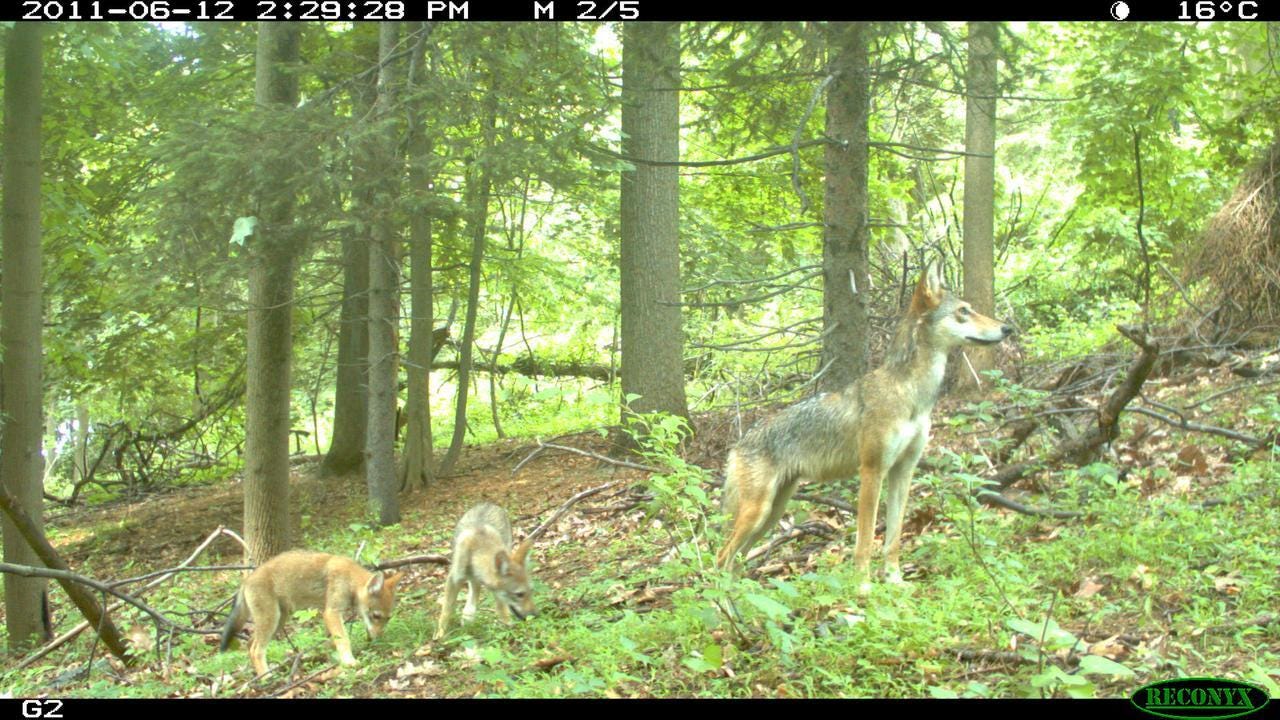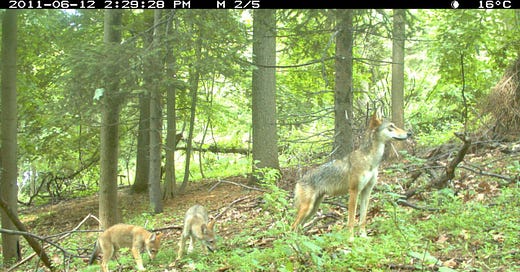Tracking the Great Coyote Invasion of NYC
As wild coyotes turn up everywhere from Central Park to Queens, ecologists armed with tree-mounted cameras and cheese-scented lures seek to find out what the canids are doing here.

Photos and video courtesy Gotham Coyote Project
When people call New York “the city that never sleeps,” they’re usually referring to the bars and nightclubs that serve alcohol until four a.m. (and sometimes far longer), or to the darkness-chasing lights of Times Square. But in the city’s quieter, shadowy places, a more feared animal is also keeping awake. The coyote has firmly established itself in communities across North America, leaving a trail of missing dogs, cats, and livestock in its wake. Over the last few years it’s set out to make New York City its home.
Lately, coyote spottings in the city have become a form of entertainment. In 2006, a coyote affectionately dubbed Hal was the focus of a Central Park chase involving dozens of police officers and even a helicopter. Though the coyote was the first to be seen in the Manhattan park since 1999, the gates to the city seemed to have officially opened to the animals. By 2010, local publications like Gothamist, New York magazine, and …
Keep reading with a 7-day free trial
Subscribe to Narratively to keep reading this post and get 7 days of free access to the full post archives.



